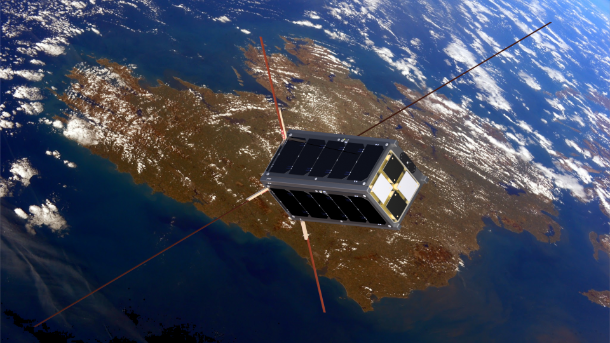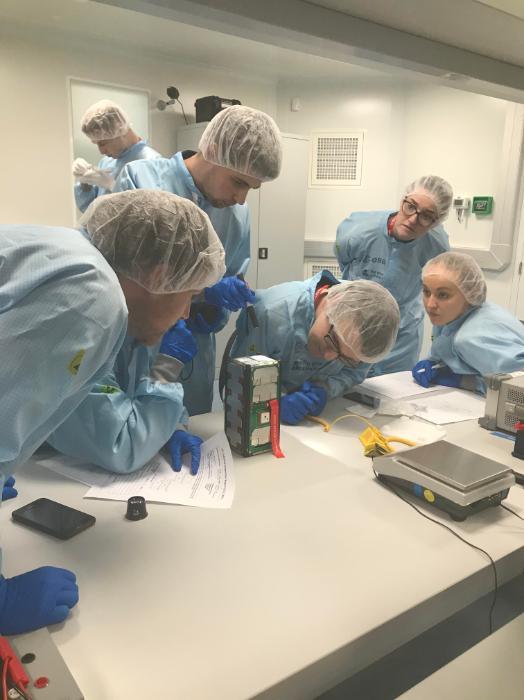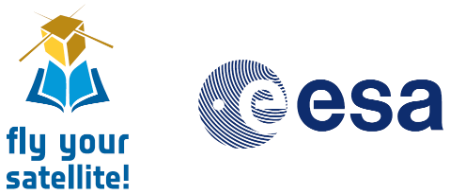Research impact
Facilitating Ireland’s leading role in international space missions
 As well as measurements of gamma-ray bursts, the gamma-ray detector experiment will also give crucial information on how it performs in space. This will increase the likelihood of future in-space collaboration with the ESA and NASA, on specific missions such as gamma-ray constellations, BurstCube and ASTROGAM.
As well as measurements of gamma-ray bursts, the gamma-ray detector experiment will also give crucial information on how it performs in space. This will increase the likelihood of future in-space collaboration with the ESA and NASA, on specific missions such as gamma-ray constellations, BurstCube and ASTROGAM.
The materials experiment, EMOD, will prove the suitability of the Solar White coating and produce updated performance data for the Solar Black coating. These data will be available to the ESA for their own thermal management coatings, the first application being on the Solar Orbiter and NEOSAT missions.
Results of the WBC experiment will be exploited in future missions with large deployable flexible structures in space, like antennae or large science instruments. With the increase in demand for communication bandwidth, this is an especially crucial capability for spacecraft. The impact will occur over the coming 3-5 years during mission studies and the use of this technology on actual missions.
Supporting the growth of the Irish space industry
 The research directly supports the Irish space industry, contributing to the Government’s vision of a sustainable and expanding space sector, as articulated in the Nation Space Strategy for Enterprise 2019-2025.
The research directly supports the Irish space industry, contributing to the Government’s vision of a sustainable and expanding space sector, as articulated in the Nation Space Strategy for Enterprise 2019-2025.
Along with the flight of the ENBIO Ltd hardware, the EIRSAT-1 team will supply performance data for Taoglas Ltd GPS antenna and cables, which are also being flown. Parameter Space Ltd are supporting the development of the ground part of the communications link to the spacecraft. The mission will allow UCD to support industry to qualify their own technology for space, through vacuum and vibration testing and product assurance. This will also facilitate a future follow-on mission dedicated to evaluating the space-flight performance of technology from Irish companies. For the space industry, being able to say that technology has already flown and performed well is of the utmost value given the risk-averse nature of the space market.
Delivering highly skilled graduates into the workforce
The capability to prepare, build, test, launch and operate a spacecraft has not existed in Ireland before. These skills in systems, electrical, thermal, control and communication engineering, along with scientific payload development and spacecraft operations, are extremely valuable in order to support the growing space market, which has shown continuous recession-proof growth for the last 20 years. Irish companies need the right mix of skills to allow it to continue growing. All graduates from the UCD MSc in Space Science and Technology have found employment, many in the space sector, both in Ireland and abroad.
Continuing to inspire school children in STEM subjects
EIRSAT-1 has resulted in extensive cultural and educational impact – even in advance of the satellite’s launch – with presentations already made to over 800 primary and secondary school pupils. The team have further plans to provide online engagement tools to widen the scope of access to the mission. Some data will be made available to allow closer interaction with the mission at classroom level. Other highly impactful activities, such as Baking in Space and astronomy festivals across the country, have attracted over 1000 people of all ages. This impact is happening now and will continue, peaking around the launch (expected in 2020).
Achieve societal impact through media
There have been many media reports, interviews and other appearances by members of the EIRSAT-1 team, which are listed in the Reference section below. This includes domestic and ESA dissemination channels.
